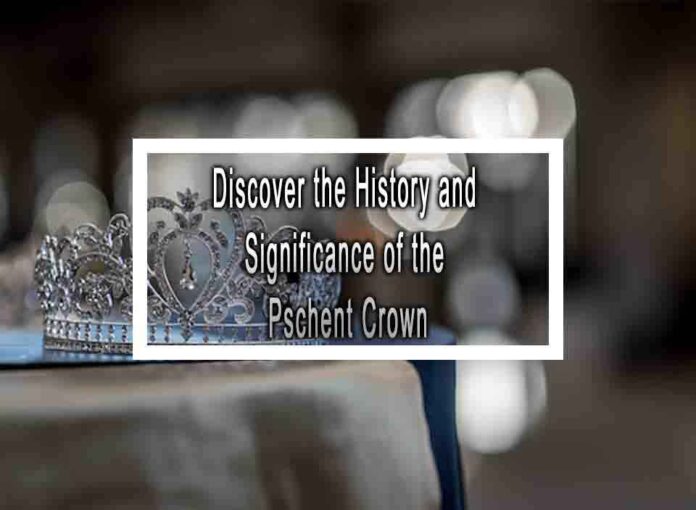The Pschent Crown, also known as the Double Crown or the Crown of Egypt, is one of the most significant and iconic symbols of ancient Egyptian royalty. It represents the unification of Upper and Lower Egypt under the rule of the pharaoh and holds deep historical and cultural significance. Here’s an exploration of the history and importance of the Pschent Crown:
1. Symbol of Unity and Dominion:
- Unification of Egypt: The Pschent Crown symbolizes the unification of Upper Egypt (represented by the White Crown, or Hedjet) and Lower Egypt (represented by the Red Crown, or Deshret) under a single ruler, the pharaoh.

- Pharaoh’s Dominion: When a pharaoh wore the Pschent Crown, it signified their authority and dominion over the entire land of Egypt, uniting the Two Lands into a single, powerful kingdom.
2. Historical Origin:
- Narmer: The earliest known depiction of the Pschent Crown comes from the Narmer Palette, dating back to the Early Dynastic Period (circa 31st century BCE). Narmer, also known as Menes, is believed to be the first pharaoh to unite Upper and Lower Egypt, and the Pschent represents his success in doing so.
3. Symbolism and Design:
- Combination of Crowns: The Pschent Crown is a composite crown that incorporates both the White Crown (Hedjet) and the Red Crown (Deshret). It typically features the Hedjet on top and the Deshret below, symbolizing the combined authority over both regions.
- Striped Band: The area where the two crowns meet is often adorned with a striped band, which may represent the union of the Two Lands or the Nile Delta, where Upper and Lower Egypt meet.
4. Divine and Political Significance:
- Divine Right: The Pschent Crown represented the pharaoh’s divine right to rule and was often associated with the god Horus. It signified the king’s role as a god on Earth, responsible for maintaining Maat (the concept of order, balance, and justice) in the kingdom.
- Political Unification: Beyond its religious connotations, the Pschent also had strong political implications. It symbolized the centralization of power and the consolidation of the Egyptian state.
5. Depiction in Art and Iconography:
- Artistic Representation: The Pschent Crown is prominently featured in ancient Egyptian art, reliefs, statues, and hieroglyphs, where it adorns the heads of pharaohs. Its distinctive design makes it easily recognizable.
6. Modern Interpretations:
- Cultural and Historical Symbolism: The Pschent Crown continues to serve as a symbol of ancient Egyptian history, culture, and the legacy of the pharaohs. It is often used in various contexts to represent Egypt’s rich heritage.
In summary, the Pschent Crown is a powerful symbol of unity, authority, and dominion in ancient Egypt. It represents the unification of Upper and Lower Egypt under the rule of the pharaoh, signifying both the divine right to rule and the political consolidation of the kingdom. As a timeless emblem of Egypt’s extraordinary civilization, it remains an enduring representation of the nation’s storied past.











